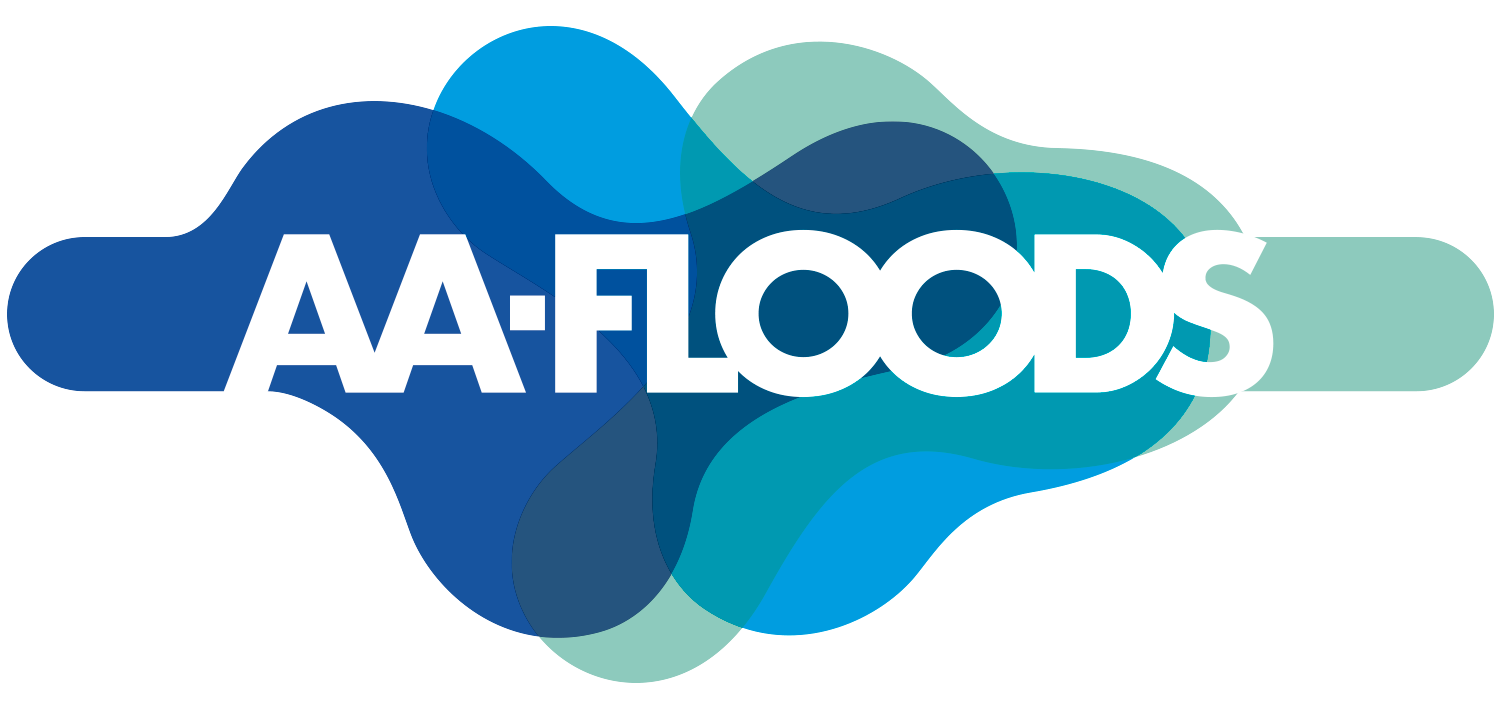THE PROJECT
Floods are Climate Change phenomena that most people affect in the Atlantic Area, through increasingly intense rains that overflow rivers and creates runoffs in urban areas. In the EU costs overpass 1,500 lives and 52,000 M€ over the past 20 years.
It is a matter of National and Regional Governments, but also of Local Authorities and Communities, Water Companies, Science, NGOs. AA- FLOODS aims to join all these actors to build and test new tools, plans and regulations to enhance Flood Risks Management and Response.
OVERALL
OBJECTIVES
The Overall Objective is to reduce human and material damages due to flooding by improving the tools of Prevention, Alert and Crisis Management at the Local Scale. Directive 2007/60 / EC promoted Flood Prevention at a Regional level. Now the challenge is the transference of its tools and capabilities to the Local Scale. Greater proximity to the potential affected and more precise and detailed analysis will make more effective the prevention, preparation and protection against floods which are more frequent and damaging in the AA due to Climate Change, which increases torrential rains and extreme tidal phenomena.
The expected impact is double:
- Make contributions to Directive 2007/60/EC so that Flood Risk Management Planning, currently for Hydrographic Basins, will reach the local scale and therefore Plans will:
-
-
- Include more detailed analysis, and consequently more effective prevention, protection and preparation measures.
- Address the evaluation of flood risks generated by urban developments themselves or by the management of reservoirs’ water discharges.
- Boost a better inter- administrative coordination to avoid these and other unwanted effects.
-
- Address the Prevention, Alert, Crisis Management and Attention to affected people from the Local Scale means involving new stakeholders, in particular Water Companies that manage the sanitation networks that evacuate torrential rains in flash floods and that manage reservoirs (and their water discharges during floods).
The common challenge is expressed in 4 questions:
- Address a common effect of Climate Change in the AA: the torrential rains increasingly frequent, intense and unexpected, that cause flash floods often combined with rivers overflows and high tides.
- Take advantage of the early warning services provided by the EU to States, Regions and River Basin Authorities (GMES / COPERNICUS), and exploit such information at the local scales, as it is in the urban areas where people live and where floods produce the most serious human and material losses.
- Improve specific aspects of emergency management due to floods in which all the AA regions could be more effective: – Coordination between Administrations – Rivers Monitoring – Hydrological and Meteorological Open Data: sharing information among competent bodies in risk prevention, warning and crisis management – Coordinated Planning of Urban Developments, Infrastructures and Flood Risk Management – Unite Prevention and Resilience, actively involving local communities
- Improve the cooperation contributing to reduce risks and their impact, to reinforce the safety of the population and the environment, strengthening the resilience and planning capacity of Atlantic Regions at local and regional level for the management of natural and climatic risks as well as those derived from human activities.
CHALLENGE
WHAT IS NEW?
Applying a local approach to the issue of floods is novel in itself. It brings added innovations:
- Greater accuracy of meteorological and hydrological data, thanks to the deployment of sensors in points that currently the EU does not require in its directives or the States have covered on their own initiative.
- Development of a new generation of flood simulation tools at the local scale, easily transferable. Kits that take advantage from improved precision and richness of data mentioned above.
- Prioritize new protocols to ensure tangible improvements in Coordination at two levels:
- Prevention: coordinate Land Use and Flood Risk Plans, including procedures for review of the existing Urban Planning and for Risk assessments of future urban projects.
- Achieve a more effective Crisis Management, i.e. improving reservoir discharges not to generate even greater risks.
- Address in a unified manner the floods caused by the overflow of rivers with those caused by the increasingly frequent localized torrential rains, incorporating for that purpose the Water Companies –that manage sanitation and evacuation networks- to Flood Management.
- Promote a new generation of Local Action Plans that goes beyond the generic concept of “Emergencies” and focuses specifically on Flood Prevention 6) Improved Prevention and Attention to those affected: i.e. involving local communities in resilience, locating people with reduced mobility and prioritizing them in alert and evacuation.
MAIN OUTPUTS & RESULTS
All Project outputs are necessary for the achievement of useful and sustainable results. If we must underline the main ones, they’d be:
- Guidelines to achieve a better Coordination between Territorial, Urban and Risks Management Planning. Target groups are National, Regional and Local Authorities.
- Pilot regulations and tools for enhanced design of sanitation networks based on modelling torrential rains runoff and networks evacuation. These will help the EU to Mitigate the damages caused by torrential rains associated with Climate Change. Target groups are National, Regional and Local Authorities, Public/Private Water Companies.
- Models for Local Emergency Plans against Floods to Reduce human and material losses through Local Scale Flood Risks Management. Target groups are Civil Protection Bodies and Local Authorities.
- Guide to implement a rivers overflow monitoring system for Early-Warning. Target groups are National, Regional and Local Authorities.
- Protocol for Reservoirs’ management to Plan, Manage & Coordinate water discharges. Target groups are Regional and Local Authorities, Civil Protection Bodies, Companies that own and manage reservoirs.
- Enhanced Coordination Protocols for an Improvement in the rapid response of the Intervention and Emergency Corps for Harm Reduction. Target groups are National, Regional and Local Authorities, Civil Protection, Civil Society organizations (Red Cross…).

